Software System Design : 3 Key Principles for Building Scalable Systems

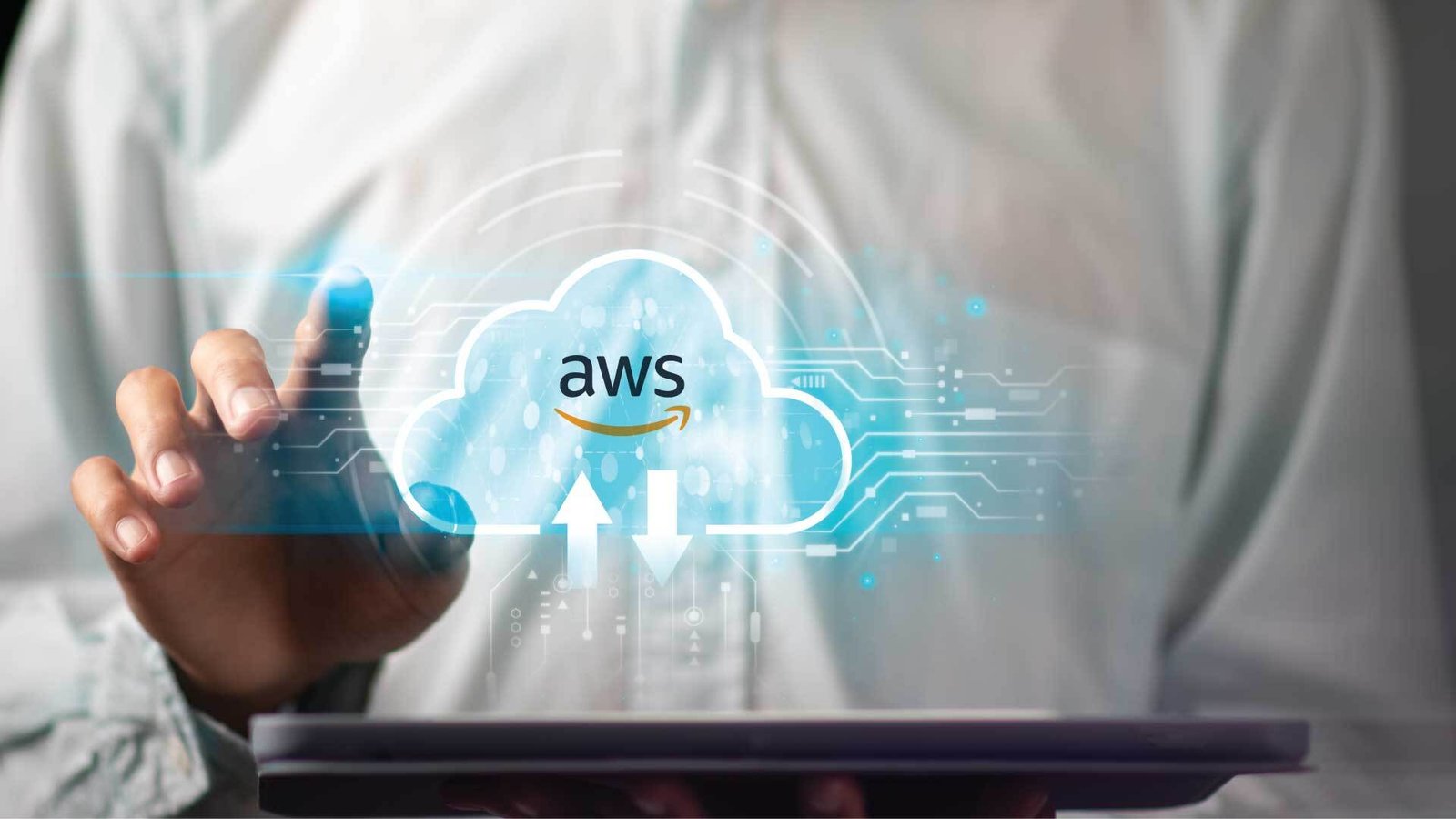
In recent years, we have seen a lot of businesses moving to cloud. From small businesses to enterprises, everyone is adopting Cloud. The global cloud market is expected to reach $2.28 trillion by 2030.
Moving a business to the cloud is much more than just an answer to the current technological hype. It involves realigning your business to promote long term growth, reductions in operating costs, and ability to operate effectively and competitively in the current market. To the CEO, CIO, and other IT leaders of small and mid-sized organizations, cloud migration is a promise, or an exercise in managerial ability.
In case your organisation is working with legacy systems that have become too expensive to maintain, faces challenges of scalability or simply wishes to adopt cloud-first paradigm, this guide will provide a complete roadmap of moving on to Amazon Web Services (AWS).
We’ll break down complex concepts into easy steps and provide practical advice you can implement immediately.
So without further ado, here are the steps:
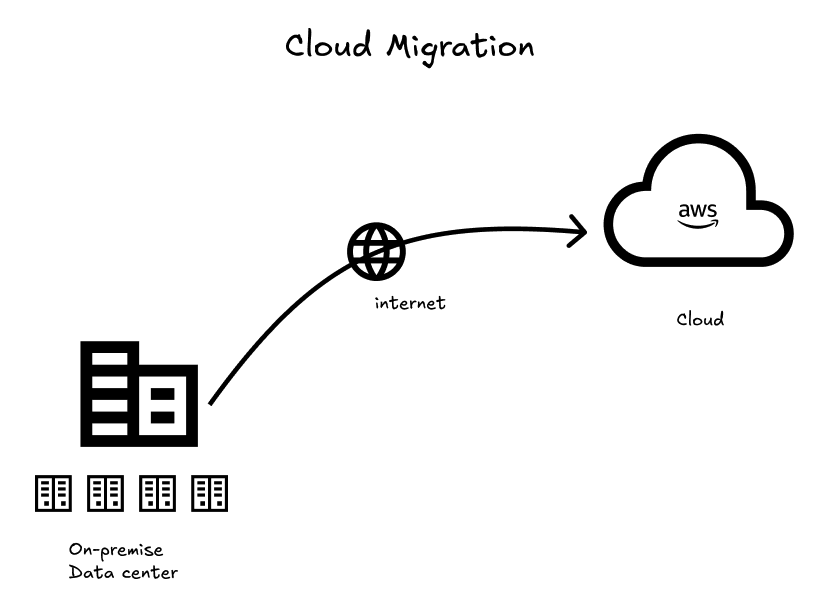
Now, before we take a look into the technical details, it is good to know what cloud migration actually means for your business.
Cloud migration is a process in transitioning your digital assets, applications, databases, and IT processes that were previously found on your on-premises data-center to cloud-based infrastructure. These cloud infrastructure are usually provided by cloud vendors. Big names include AWS, Azure, GCP, etc.
There are several types of cloud migration strategies we can follow:
Rehosting or “Lift and Shift”
Rehosting is simply re-deploying your applications in the cloud without much adjustments. Performs well with applications which do not require immediate optimization.
Re-platforming
It involves making minor adjustments to your applications to take advantage of cloud without changing the core architecture. For example, you might switch from a self-managed database to Amazon RDS.
Refactoring (or re-architecting)
It means redesigning your applications to be cloud-native, taking full advantage of cloud services and scalability features.
Repurchasing
It implies the transition to cloud services, software-as-a-service (SaaS) solutions, rather than sustaining your own, software.
Retaining
It implies the transition to cloud services, software-as-a-service (SaaS) solutions, rather than sustaining your own, software.
Retiring
It involves decommissioning applications that are no longer needed.
A lot of most successful migrations use a combination of these strategies depending on each application’s specific requirements and business value.
Launching and maintaining any successful cloud migration would include a careful analysis of your current environment. This is a step that you can not be underestimated, but by taking time now you can save yourself a lifetime and issues further down the road.

To do this, begin with conducting an inventory of all of your IT assets. This does not only mean servers and applications but also databases, network settings, security policies, backup infrastructure and even documentation. It is during this step that many organizations learn things that they do not know. This might include such applications or systems as departments have installed without the IT knowledge.
Record the current performance metrics and dependencies of each application and system as well as its business criticality. A payroll processing application is obviously more important than an in-house application that is used by few people. The given business impact assessment will make you understand which systems should be migrated first and which must be planned with the strongest attention.
Better your planning and assessments are, less you will have risk of downtime and business loss during the migration process.
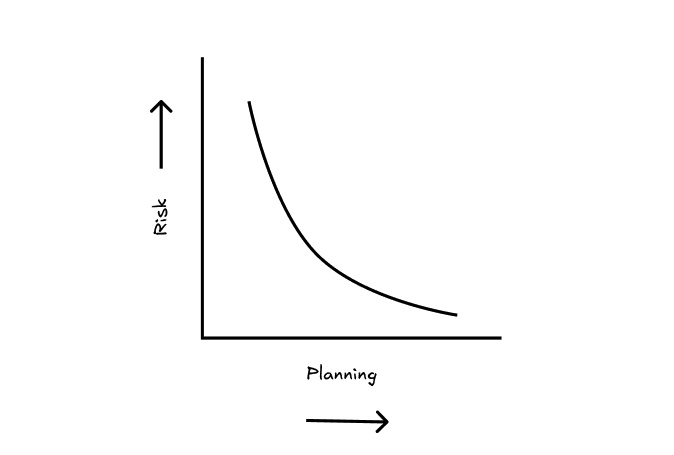
Focus especially on information flows between systems. The truth is that modern applications do not always work in isolation so you need to know about those dependencies in planning how you want to progress your migration. You need to develop a visual map that indicates how data moves in and out of your applications, databases and third party systems.
Compliance should not be bargained upon during this stage of assessment. There are certain rules concerning storage and handling of data in such industries as healthcare, finance, and government. There are many compliance certifications provided by AWS, however, you will have to find out all specifics of requirements regarding your business to plan implementation.
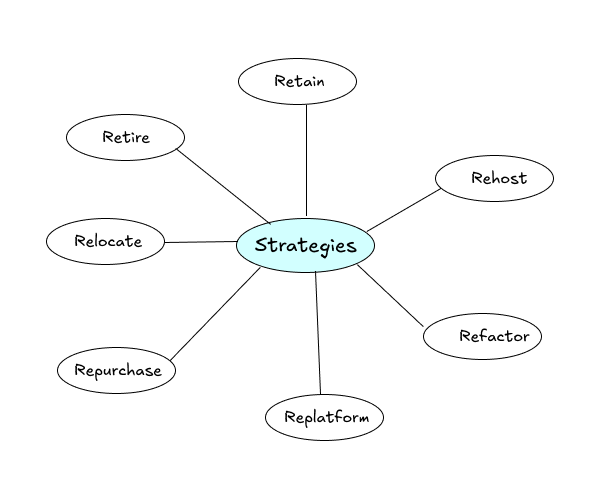
Now that you have assessed and gotten your act together you may devise an overall migration plan that best fits your organizational requirements and limitations.
Start with grouping your applications into waves of migration. The initial release must have shorter dependencies and less important applications that could be used as the training opportunities of your developers. Future waves will be able to address more intensive, company-essential systems as you develop cloud capabilities.
It may be advisable that you start with development environments and test environment before going live with your production systems. This will enable your team to experience AWS services at a less risky environment as well as save costs in the short term and increase developer productivity.
AWS Provide AWS Prospective Guidance for large migrations.
Make a complex schedule that takes into consideration systems dependencies. In case database A is dependent on database B, database B should be migrated first or there should be a way to keep the two databases connected while the migration occurs. Allocate time in your plan to deal with some unforeseen issues and testing.
Before actual migration work begins, you can organize a workshop within your organization to prepare your team for better understanding of migration. After migration, everything will not be same, your business dynamics changes, your team will be affected. So be prepare.
Build your cloud architecture design on this plan. It does not imply that you should settle on all the details but there should be a clear picture of your target state. Things such as high availability, disaster recovery, security, and cost optimization must be considered in the early days as opposed to being an afterthought.
Properly configuring your AWS environment before beginning migration activities sets the foundation for security, cost control, and operational efficiency.
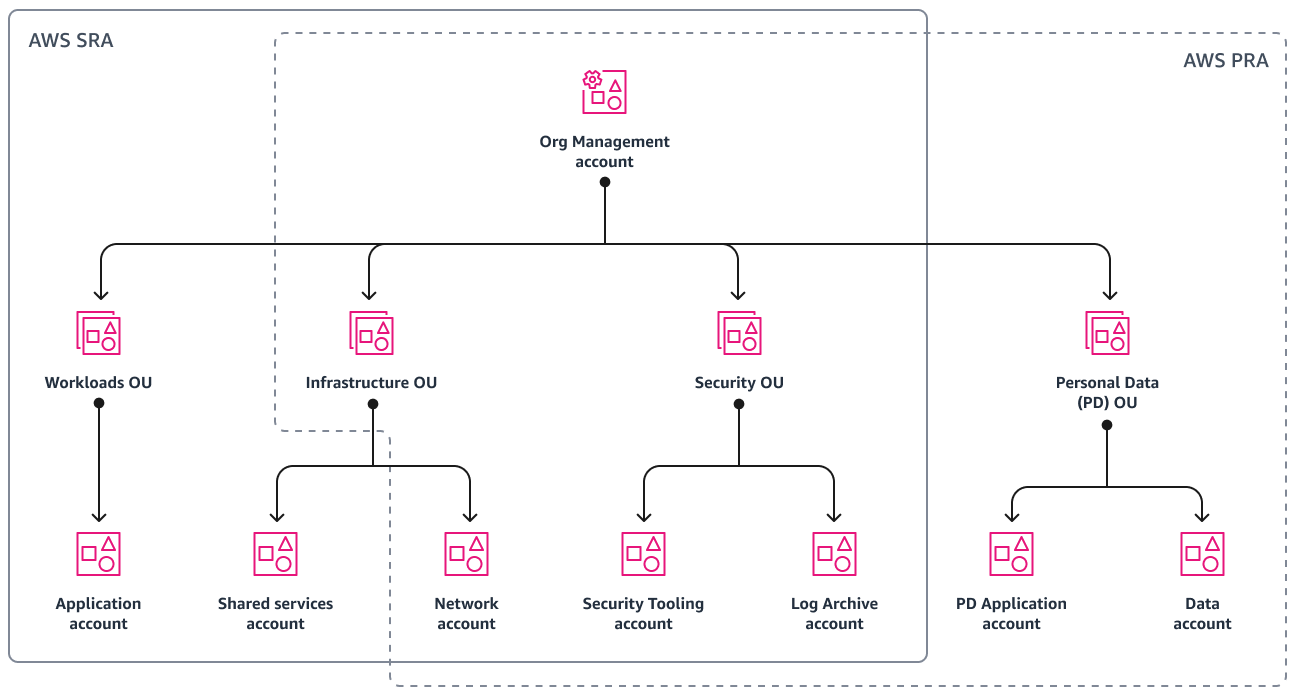
The next step is to use a multi-account strategy with AWS Organization. Even small companies appreciate the benefit of a physically distinct account (Development, Staging, Production) and business units. This segregation enhances security, eases the process of cost apportionment and minimizes the chances of mistaken alterations of production systems.
Security is vital. So start configuring Identity and Access Management (IAM) properly. Use the least privilege principle and only grant privileges to users and applications, just enough privileges to perform their tasks. Design access controls on the basis of roles within your organization and roles.
Install a good logging and monitoring facility at the earliest. AWS CloudTrail is advisable to enable it on every account and monitor API calls and changes. Using cloudwatch, Amazon monitors your applications and resources. The services provide the necessary support in troubleshooting, security-auditing and cost optimization.
Put cost controls in place so that will avoid budget surprises. AWS Cost Explorer and AWS Budgets assist you in keeping a tab on the expenditures and allow you to configure notifications in the event of overspend. You might want to consider using the AWS Cost Allocation Tags to measure expenditure according to project, department or application.
There is some careful planning that needs to be done when it comes to network design, particularly when you have some type of hybrid connectivity to on premise systems. Amazon VPC uses VPN or AWS Direct Connect to connect the isolated network environment created using Amazon VPC with your existing infrastructure in a secure and easy to use way.
It is proposed to begin infrastructure as code application with the help of AWS CloudFormation or Terraform or other popular one. This solution is the reproducibility, version control of your infrastructure and control in any number of environments.
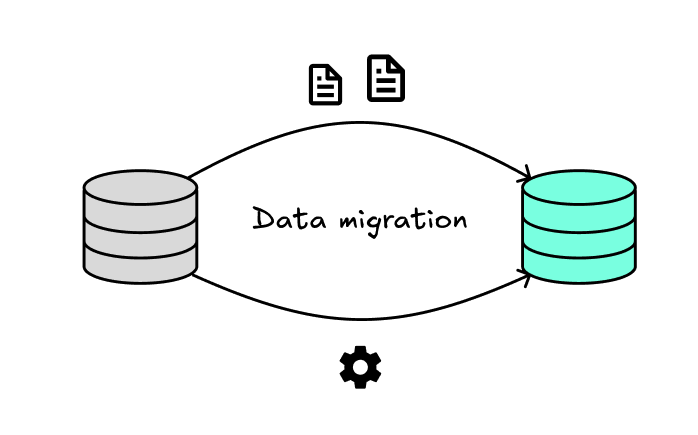
The most demanding and dangerous part of the cloud migration process is usually its data migration. The method of data flow is dependent on issues such as the amount of data to be moved, tolerable downtime and network bandwidth.
Online data transfer may be enough in the case of smaller datasets, or applications that have the potential to afford some outage-style downtime. AWS DataSync can optimize the process of transferring the large amount of information over the internet and has inbuilt optimization and verification processes.
AWS offline data transfer services may also be useful where the data is large or bandwidth is limited. AWS Snowball devices enable you to literally box off terabytes of data in order to ship it out to AWS without incurring internet bandwidth issues. AWS Snowmobile may be utilized in cases when the size of the data is really large, small enough for transfer through the use of a shipping-container-sized device and up to 100 petabytes of information.
Migration of databases is especially important because data has to be kept consistent and downtime must be kept as minimal as possible. AWS Database Migration Service (DMS) allows both homogeneous migrations such as Oracle to Oracle as well as heterogeneous migrations such as Oracle to PostgreSQL. The service supports either one-time migration, or continuous replication to achieve minimal downtime.
Design your data migration steps. First use non-critical data and systems to audit your processes and tools. In cases of important databases, you can resort to a staged implementation: You first install replication to AWS and then redirect the production.
Each migration step should have data validation built into it. Do not think that data has been successfully transferred without checking. Compare record and checksum numbers and sample data between source system and destination system.
Reflect on your migration period synchronization needs of data. Other systems may be software whose run needs to continue over weeks or months, needing bi-directional synchronisation or controlled handling of conflicts.
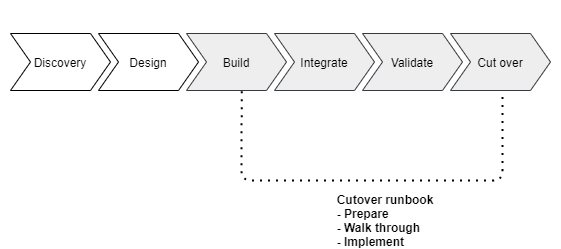
From AWS Documentation
Application migration strategies are very different based on the business need, nature of application architecture, as well as technological stack.
AWS Application Migration Service may help you do this easily when the workloads are appropriate to use lift-and-shift migration, by making real-time copies of your servers in a cloud in AWS. Such a strategy will have minimal alterations to the application, although it may not get the most out of the cloud.
Replatforming strategies are also used frequently in web applications. AWS Elastic Beanstalk offers simplified deployment and management capabilities that may be of interest instead of running your web servers on a virtual machine, or Amazon ECS to run containerized applications.
Cloud application may need more aggressive refactoring of legacy apps. This might include decomposing monolithic applications into microservices, using cloud-native databases or moving some functions to a serverless computing platform with AWS Lambda.
Configuration of the applications is to be given special consideration during migration. Connection strings, paths to files and environment variables usually require modification of the cloud environment. You may consider the use of AWS Systems Manager Parameter Store or AWS Secrets Manager to address secure configuration management.
Security in cloud is based on a shared responsibility model. AWS secures the infrastructure, you secure the application, the data andalse.
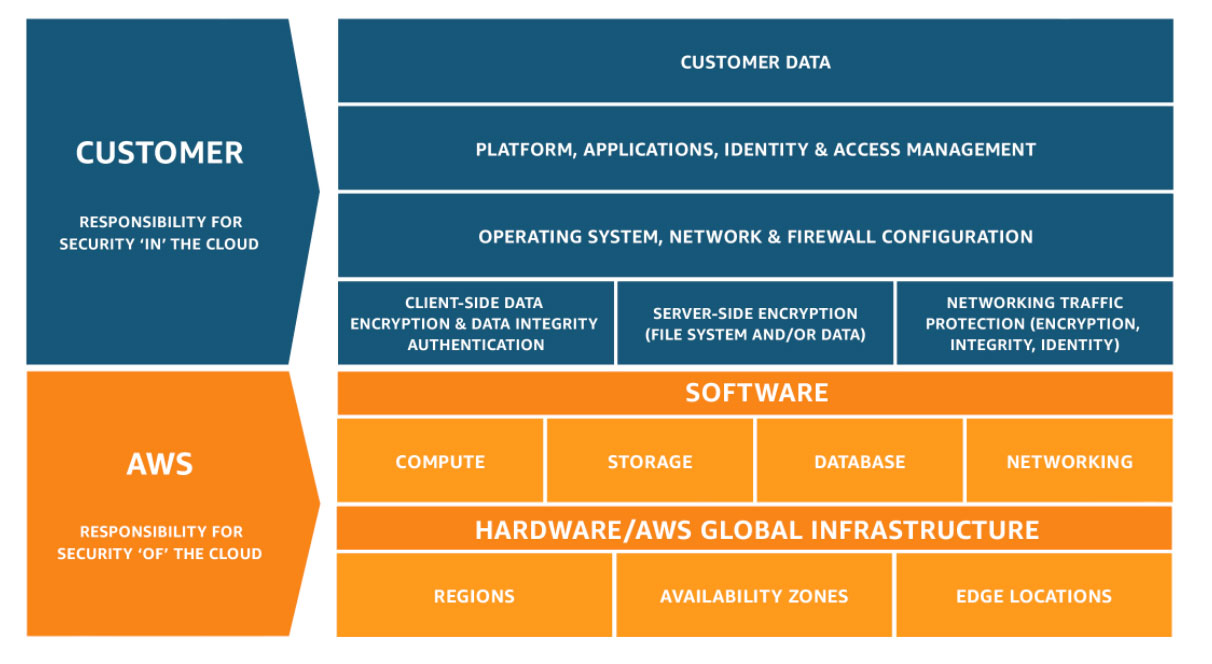
Official AWS Shared Responsibility ModelEnsure you are already using encryption of both data in transit and encrypting data at rest at the onset of your migration. AWS offers many encryption services such as AWS Key Management Service (KMS) that can administer the keys of encryption. Encryption is accessible at a very low performance cost to most AWS services.
You need to thoroughly plan your network setup, the security groups, and the networks access control list to manage your network security. Use the design principle that requires the least privilege network access meaning that there is only limited necessary connection between the resources.
The different solutions and permission models make identity and access management more complicated in the cloud. Periodically review IAM permissions and think of how you can use AWS Access Analyzer to detect undesired access permissions.
Compliance may require a particular AWS region, encryption standards, or logging standards. AWS offers compliance documentation and tools that aid in adhering to different regulatory demands and you will paperwork on suitable controls in your case.
Discussions about constant security monitoring should be considered through services such as AWS GuardDuty as one way of detecting threats and AWS Config as one of the ways to monitor compliance. These services are able to automatically identify security problems as well as configuration drift.
I would document your security measures and controls in the process of migration. It will be useful if you want to conduct compliance audits, and will assist in ensuring uniformity in your security practices within your cloud environment.
Broad testing ensures that your migrated systems work properly and according to the performance demands.
Work out a testing plan that entails functional tests, performance tests, integration tests, as well as, user acceptance tests. The two kinds of testing are different and have diverse purposes and could show various problems.
Testing of functionality ensures that the applications are doing what they are expected to do in cloud environment. This involves testing of every feature, workflow of users and business processes. Do not expect applications to behave the same in the cloud — little changes in its environment can lead to unanticipated results.
The latter is of special interest, since cloud resources may perform differently than your on-premises equipment. Put it into realistic loads and compare the results to your initial values that are done during the pre-migration test.
Integration testing is used to guarantee the functionality of connection between systems. This is very crucial when you are migrating your systems in waves, or considering to keep hybrid cloud connectivity. The API connections, test data flows and other built-ins by batch processing jobs.
User acceptance testing entails your business users confirming to the fact that their needs are met by the migrated systems. Schedule such testing way before your cutover date so that there is some time to resolve issues.
Make up rollback procedures and test them prior to moving to your production. When you are certain that you can easily roll-back to your former environment, there is less risk taken and confidence in the migration process.
Write down all the test findings and problems. This data will come in handy in the future moves and assist in proving the completeness of your migration procedure.
It is the go-live stage of your migration strategy and preparation. A close coordination and communication is essential to the success.
Set the cutover to a time that will have little business effect, such as the weekend. Make a clear communication of the schedule to all concerned parties as well as certain windows during which a system may not be operational.
Make all your migration personnel available in the process of the cutover including subject matter experts of key applications. Lay down proper communications and escalation process to be followed in case of any problems.
Closely observe monitors of the system during initial few days following the migration. There is a possibility that cloud resources would not perform as expected when under load and this can be identified early whereby it can be solved immediately.
Significant benefits that accompany post-migration optimization have often been extremely beneficial as compared to the original migration. You can save the money by right-sizing through the actual usage patterns. AWS offers such tools as AWS Compute Optimizer to find optimization prospects.
There should be a consideration of using cloud-native services instead of migrating infrastructure. As an example, instead of self-managed databases, you could use Amazon RDS or access optimization of content delivery by using Amazon CloudFront.
Recheck your disaster recovery and back-up strategies in cloud. AWS has a broad selection of automated backup tools as well as cross-region replication that may also be more effective than your old means.
The activity of cost optimization must not be a once-only eventful activity. Reserved Instances or Savings Plans when you predict a certain workload and auto-scaling where you have an unpredictable workload and monitor your patterns of resource usage regularly.
Migration to the cloud has been known to come with anticipatable obstacles that can be handled with the right preparation and thoughtfulness.
The unestimation of complexities of the dependencies of the application is one of the problems that happen most of the time. Simple looking applications may turn out to be dependent on other systems, common databases or on special network setups. A well conducted and documented assessment mitigates surprises in migration.
Migration of the data is commonly slower than anticipated, particularly when large amounts of data are involved or when the database schema is fairly complicated. Schedule long durations of data migration and look into the option of parallel migration where feasible.
A similar performance problem can happen when applications that are optimized to run in an on-premises infrastructure are deployed in cloud environments with different resource sets. These problems can be addressed through proactive performance testing, right-sizing them prior to their effecting production users.
It is often common to experience cost overruns where the organization fails to put the necessary cost controls and monitoring mechanisms. Set up budgets, alerts and routine cost-reviewing procedures at the start of your migration.
Lack of required skills may slow the migration and bring about less-than-optimal setups. Invest in the educating of your team or even look into the idea of partnering with AWS consulting partners in terms of requiring specialized expertise.
Even technically successful migrations can be derailed by a combination of change management resistance by users and other stakeholders. Engage business stakeholders in the development of a plan, inform them about benefits in a clear way, train and support.
Setting the success measurement will indeed aid in showing the worth of your migration investment and can point at those places that still need the enhancement.
Cost measures need to measure total cost of ownership of your on-premises and cloud deployments. Fact in not only the costs of infrastructure, but the personnel time, maintenance costs and opportunity costs.
Application response time, the availability of the system and the ability to scale should be affected positively showing improvements in the performance metrics. Your pre-migration assessments form your basis of measuring as it forms the comparison points.
Business metrics may entail a better developer efficiency, quicker time to market of new functions, or disaster recovery capability. These measures frequently give the best justification in the migration investments.
Operation metrics may involve spare time in routine maintenance work, better monitoring and alerting systems or better compliance reporting.
To keep the stakeholders supportive and to find the possibilities of optimization, it is crucial to create regular reporting, based on the metrics. Most organizations would enjoy quarterly business reviews.
You should consider migrating your business to AWS as a large investment in the future of your organization. As much as it involves planning, commitment of resources and good project management, it improves scalability, decreased maintenance overhead and improve disaster recovery and provides the incentive to most organizations.
It has to be a business transformation project rather than a mere technical project in order to be successful in it. Incorporate stakeholders within your whole organization, make a sound investment in planning and evaluation and never hurry the migration process.